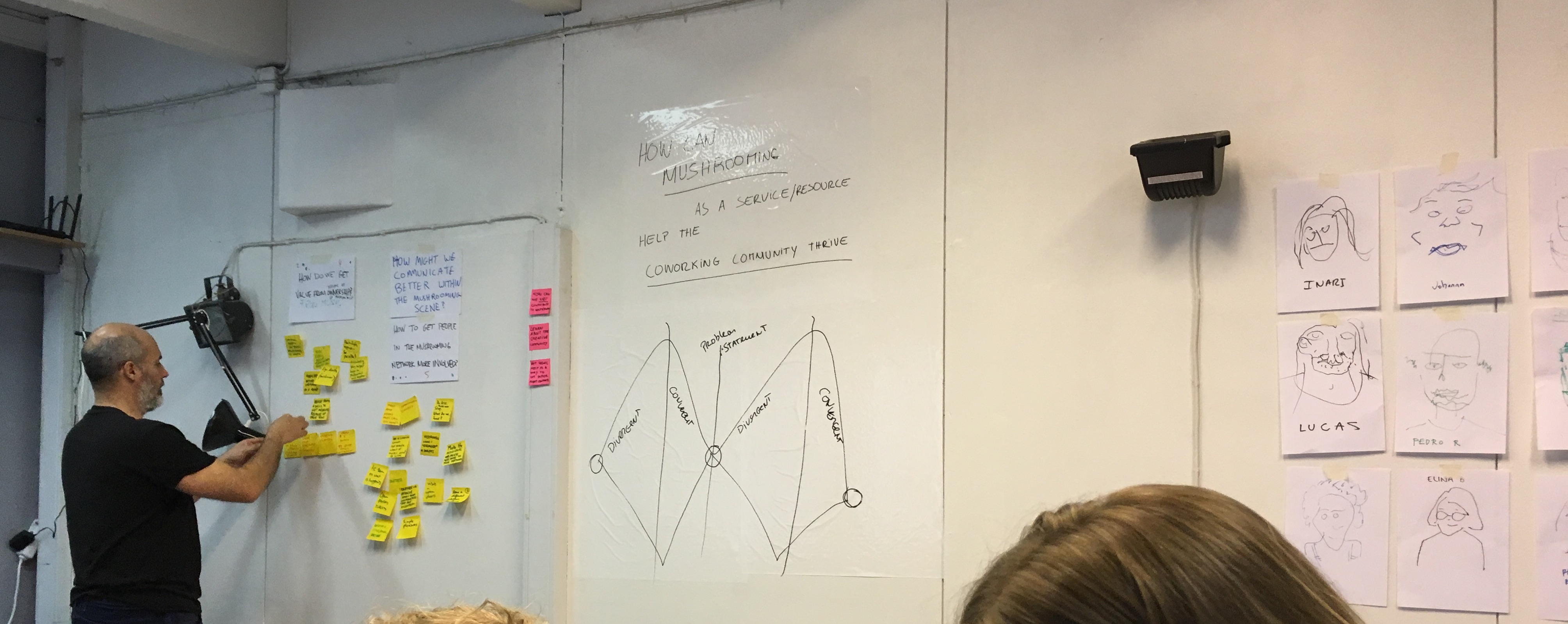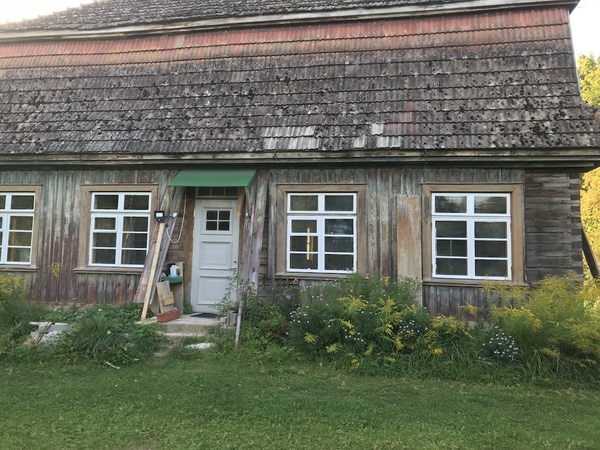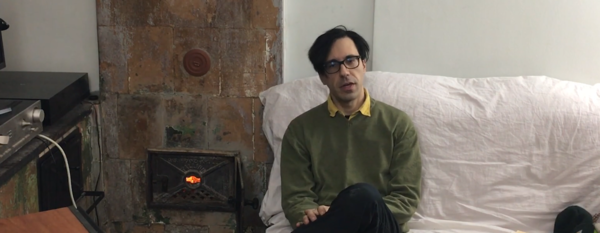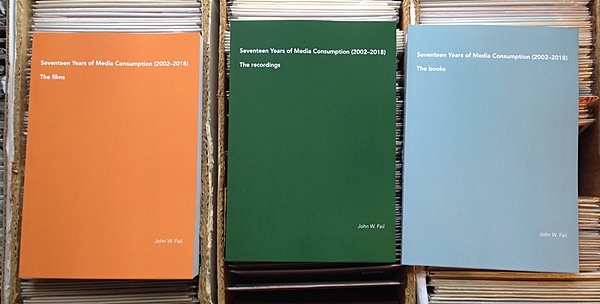
Kuusi Palaa: view from within season one
The Biathlon system that I have been co-developing since 2016 has been in use at Kuusi Palaa, a cooperatively operated project space in Helsinki. Kuusi Palaa opened on 1 March 2018 and will run at least until the end of June. The idea for Kuusi Palaa was to continue using the Biathlon tools that Temporary used (and operating in the same physical space), but to further decentralise the financing and become a legal cooperative. So now, instead of just the content and day-to-day operations being spread over a large and open mix of people, the paying of the rent and bills is also shared.
We did this through a simple extension of the Temporary cultural currency model. All activities are still produced using our own internal points system (called 'Kuusi Palaa points' and abbreviated with a ᵽ sign), and these points are still given to people for attending and participating in the events. But anyone can also buy a 'stake', which costs 50€, makes you a legal member/owner of Kuusi Palaa, gives you a key for 24/7 access, and comes with 500 Kuusi Palaa points attached (the equivalent of showing up 250 times to the 'open' times, or attending 50 normal events). People can buy multiple stakes, and organisations can also buy them for a price of 75€ each. Kuusi Palaa itself as a centralised body exists only to have a bank account, collect the stake money, and spend it on rent and bills. Kuusi Palaa is forbidden from ever applying for a grant or public funding under its own centralised identity; members are encouraged to seek their own funding for their projects through whatever means they normally would and support KP through the purchasing of stakes.
The plan was to sell four months of stakes at a time, thus requiring KP to only be in an existential fund-raising crisis three times per year. If there aren't enough stakes to fund the next season, we give up and quit.
Things started off surprisingly well, at least to my (sometimes cynical) eyes. We needed to sell 100 stakes (or less, depending on if organisations bought some) in order to fund the first four months, and this happened in about three weeks. The more active people from Temporary who were still in Helsinki not only bought stakes but also promoted it well across their networks, and a large number of new people appeared and bought stakes - there are over 30 names that I don't recognise, all people who did not previously have accounts on the Temporary website. Honestly, I was shocked and delighted how fast it happened.
So, it opened, and since then it's been a non-stop barrage of work, trying to improve Temporary's tech infrastructure while making the necessary changes to the digital platform to accommodate the new features in KP's design. We're almost halfway through the first season, and it's going really well in some ways, but I fear it's also unlikely to continue past June.
Some observations : (warning, long!)
Most of the people who bought stakes have declined to actually participate in Kuusi Palaa. At the time of writing, 37 of them have showed up to one or more activities. That leaves 60 people who paid at least 50€ and have not stepped through the door even once in the last two months - a door of which they have a key to open 24/7. I'm sure there are many reasons for this, and if surveyed, 57 out of 60 would probably answer 'I'm too busy'. Which is of course both true and bullshit at the same time. We're all busy, but we still choose to prioritise the things we do. The deeper questions, which we must figure out, are why we choose the priorities we do, and why Kuusi Palaa is not accommodating those priorities.
Finland is a particularly interesting place to launch a project like this. The cultural community is on the whole very supportive and trusting - the fact that so many complete strangers liked the concept enough to pay 50€ is amazing, and I can't imagine such a thing happening in other places I've lived (Estonia, USA, Scotland). But this is also a double-edged sword - Finland is a place with a strongly professional cultural production field, and I suspect that people like to support things but don't always want to put in the work themselves, as there is usually a manger, producer or administrator to do that.
A project like Kuusi Palaa will not survive without people actually using it. Of course, if all 97 people tried to share the space every day it would be too many; obviously a balance between passive and active members is needed, and those roles will hopefully always shift. But the purely passive form of financial support – great idea, sign me up, oh thanks but I really wanted to come to something but I was just too busy – won’t be sustainable.
It takes time for people to accept unfamiliar models, part one: ourselves. My own practice over the past few years has become focused on imagining different possibilities for cultural structures and less focused on the content of the culture itself - I've become a sort of meta-artist, perhaps. This emerged from working with Agnieszka on the fringes of the Finnish context, where lots of nice stuff happens, but is usually produced in similar ways. Biathlon grew out of a desire to not only diversify the formats of cultural activities, but to widen the scope of 'who' was allowed to produce culture, and to hopefully break down invisible boundaries without explicitly focusing on identity or subcultures.
I don't think the model of Kuusi Palaa is particularly radical, but in a heavily association-based arts scene, where within those associations there are usually clearly defined roles for producers and administrators, it's a different way of thinking. I believe that most small cultural associations in Finland, or at least the ones I have experienced, are ultimately "run" by one or two people - either explicitly, through the structure of paid staff positions and/or a strong board, or implicitly, by there being one or two 'alpha dogs' who emerge and do most of the heavy lifting (even if it's a supposedly members-run organisation). People love belonging to things here - there's an absurd number of registered associations in Finland, and many people I know belong to several - but the penchant for passivity is often baked in to the structure of these groups and how they operate.
It became clear to us during the transition period between Temporary and Kuusi Palaa that we could not sit back completely and wait for everyone else to build it. I would have liked to, but practicality won out and we had to push along the project and make Kuusi Palaa come to life or it would have never happened in time. This was also constrained by a number of special factors: the nature of Biathlon as the operating model, the fact that we had a deal with the property landlord to not pay rent during the transition period but that we were expected to again once renovations were completed, and the legacy of Temporary itself, which was always and will always be seen as ‘our’ space. I am delighted by KP but agree that it would have been much more interesting if it we could have separated ourselves from its founding further and truly let the ‘community’ create something on their own. Of course, the community only existed in the first place because of Temporary, so that also colours it …
Kuusi Palaa was designed to be genuinely open to whoever wants to be there and activate it. Yet despite this, we get emails to the info@kuusipalaa email account from funded, professional organisations asking how they can set up an event - it's the classic mode of wanting to talk to whomever 'runs' a place to set up a deal. (The standard answer is that they are free to write a proposal on the web platform just like anyone else, and most don’t, probably because they don’t want to go through the hassle, they don’t see the value of our system, or maybe that they don’t want to depend on their proposal being supported by strangers.)
Even within Kuusi Palaa itself, this mode of thinking persists. Recently, a local arts organisation invited a representative of Kuusi Palaa to go to a meeting about something. I spread the info to all stakeholders asking if any of them wanted to do it, and several people asked why I myself wouldn't attend as the representative, as even many KP stakeholders still perceive Agnieszka and I as the ones who 'run' the place. Admittedly, we are actively developing Biathlon, which is the operating model and platform that is inextricably linked to Kuusi Palaa, and we were the primary catalysts for migrating from Temporary to Kuusi Palaa. We are also among the most active and present members on a daily basis, if not in the physical space, certainly on the digital platform, which is the engine that drives everything. But it will not and cannot depend on just two or three people, and the more other stakeholders start saying 'I also run Kuusi Palaa', the better chance it has.
Other members offered to attend that meeting, but told me that they did not feel comfortable speaking for the whole cooperative. Which is another point of difference from traditional organisations – no one can speak for the whole cooperative, including me, but somewhat paradoxically, everyone can as well. There is a certain amount of chaos and uncertainty inherent in an open project like KP, and this fluidity could be perceived as messy, unstable, and problematic (as those used to carefully controlled and produced culture spaces might feel) or instead as a wonderful, inviting and free zone of possibilities. I actually perceive it as both things simultaneously, and I don’t see a contradiction there.
If it seems like I am negatively complaining about things, I’m not; I have been pleasantly surprised by those people who have been active. The proposals and events have been happening, and coming from a wider array of people than those who produced at Temporary; the events I've been to have all been great. I think the idea of ownership, which Kuusi Palaa stakeholders need to feel, takes time to emerge. A few of my acquaintances have gotten involved without me needing to push them or promote the concept, and that’s been awesome. But I’ve heard from people that they would like to see some sort of event or meeting for stakeholders, even something more social like the ‘open house’ events we had in February before KP properly started, so there might be an increased sense of community than what happens now from just randomly running into people when you are there. And this is a great idea. My followup question to them is always ‘why don’t you propose it?’. But it hasn’t happened yet; I think there is still a sense that someone ‘in charge’ should organise it.
Yes, Biathlon is ‘in charge’ of the website/digital platform, the hardware such as the door locks and kiosk, the domain name registration, and the Ethereum contracts which manage the points. I’m not sharing the passwords with all 97 stakeholders, though I’ve been very open with anyone who has expressed interest in taking on some of the IT responsibilities. But the ownership of Kuusi Palaa is genuinely shared across all 97 members, and no one needs permission to organise something, start a discussion, or anything else. The stakeholders forum on our digital platform currently only has three posts, two from me and one from Scott. The tools are here to collaborate, and if you want better tools, I’ll try my best to improve them.
It takes time for people to accept unfamiliar models, part two: structures. Outside of the scope of art, Helsinki is experiencing a boom in urban participation ventures that empower people to be more engaged outside of traditional social-commercial interactions. I'm referring to projects such as Somppasauna, the many neighbourhood street festivals such as Kallio Block Party, the activities of groups such as Yhteismaa (who organise amazing stuff like theatre festivals inside of saunas, public dinners in city space, etc.) and of course Ravintola Päivä which is so successful it’s just kind of annoying at this point. A lot of these activities, while fantastic, are commonly referred to as civic or urban ‘activism’, a term that I disagree with, and I believe only serves to illustrate the incredible privilege that many of us have who live here. Regardless, there is something in the air, and it’s generally good stuff; if nothing else, it illustrates the hunger that people have in Helsinki for different behaviours.
I don’t think Kuusi Palaa is considered to be part of this scene, nor do I think it’s in opposition to it. If anything, because of the lack of a centralised public voice, no one really thinks about KP much, if at all. Obviously I’m a bit biased, but I think the actual practice of self-organisation is stronger at Kuusi Palaa than anywhere else in Helsinki, at least in some ways, except for maybe Somppasauna. The digital platform, points and ID cards may seem cumbersome to some, but once your event has been scheduled, you are really the one in charge. You promote it, you show up and produce it, you clean up after yourself, and that’s it. It’s entirely possible to produce activities at Kuusi Palaa without ever meeting any of the more active members who are there on a day-to-day basis. And this surely seems weird to some people, perhaps even too open.
I suspect that some of the 60 members who haven’t turned up in the last two months are waiting for more guidance. Or, maybe they just haven’t been particularly interested in anything that has been scheduled. I don’t begrudge them for this, but a significant amount of independence is built into the Biathlon concept, and that’s a subtle difference from previously existing cultural forms. It may take time to recognise, understand and process this difference, but unfortunately time is not something we have a lot of to spare.
At moments throughout Temporary and Kuusi Palaa’s existence, I have often wondered about the limited numbers of people who came and actually used the space. We designed it to be genuinely open for anyone to use and make activities without needing professional accreditation, funds, or even friends. Yet when we closed Temporary and asked people to complete a survey about why they did or didn’t come to Temporary, we noticed a lot of imaginary boundaries which people perceived. In a largely consensus-based society such as Finland, there’s still a sense of needing permission to do things – whether from a governmental authority, some figurehead, or even from social pressure.
I’ve repeatedly heard or read comments about how Temporary/KP is a ‘closed community’ (despite literally anyone in the world being able to legally become an owner of the cooperative and all activities being open to everyone), that certain types of activities were not allowed to happen there (with the only actual prohibitions being against illegal activities, such as hate speech), that eveything there had to be free, or contradicting that, that you have to pay to go there (neither of which are always true - it's up to the event organiser). In a bad mood, I might see these as excuses for not participating, by people not honest enough to just flat-out admit that they weren't interested. Being more forgiving, I'd say these comments clearly illustrate our own failures of communication, some of which are inevitable when trying to avoid a central voice. Although the reality is that 90% of the text on the website explaining how KP works was written by Agnieszka and I because, well, someone had to do it. So the voice is much more central than we pretend, yet it’s trying to avoid being so, which is no doubt a problem and something that must be addressed. We’ve tried to have it both ways, but it doesn’t work, and it no doubt contributes to the sense of confusion.
There’s another big structural difference between Kuusi Palaa and some of the projects mentioned above, which is that the aforementioned projects generally have some sort of muscle behind them, whether it’s money, institutional backing such as the city or a university, or both. Kuusi Palaa has none of this, but it was hoped that some muscle would trickle down through the stakes concept, and that organisations and other groups would purchase stakes to support Kuusi Palaa and produce their own activities there.
This mostly has not happened; there are only four registered organisations who have purchased stakes at the 75€ price to support the first season, and three of them are closely connected to us at Biathlon on a personal level. And I’m extremely grateful for their support, because it has been amazing; way beyond the extra 25€ per stake, they have provided first-rate content and access to a wider range of networks and attention than individuals might be capable of reaching.
But otherwise, most of the stake money has come from individuals. This may have something to do with the very model of raising the stake capital in the first place, which to many was seen as crowd-funding (though without using a platform such as Kickstarter or GoFundMe). I don't personally consider Kuusi Palaa to have been crowd-funded, but it’s fine if people see it that way. But Kuusi Palaa is not a commercial product or a charity effort – it’s a collectively operated cultural venue, and the ‘crowd-funding’ is always ongoing. This isn’t like putting coins in the charity tin at a coffee shop, or putting up money to help someone release an LP. This is a membership in a cooperative that brings you increased influence on the activities of that cooperative proportional to your investment. I’m not sure if many people saw it that way when they bought their stakes, and again, I’m extremely grateful to everyone who supported Kuusi Palaa in season 1, especially those who were not familiar with the past activities at Temporary. I suspect, and I assert this without a shred of evidence to support it, that popular crowd-funding platforms have become familiar and they have influenced the way people have perceived the financing of KP and their own subsequent interactions (or non-interactions) with it.
If Kuusi Palaa is to survive, it has two options. The first is that it gives up on the decentralised financing model and starts seeking financial sustainability through a central method, perhaps applying for public funding directly, or by incorporating some commercial enterprise. This would be the place where I step out; while I am not against organisations that survive this way (which is, let's face it, most of them), it's not interesting to me to become another one and it would be counter to Biathlon's efforts over the past two years to establish alternatives.
The second option is that Kuusi Palaa will grow through it's existing model; that the 97 existing stakeholders start to take more of a sense of ownership and that the administrative tasks of promotion and development happen organically. Many of the existing stakeholders have been doing exactly this and I do not in any way wish to sound critical or unappreciative of their efforts; that's been a dream come true. But not everyone has done this, and it needs more of a push. New people need to continually find the space, join up (not necessarily as a stakeholder), be there and participate. People need to feel welcome. The best mechanism for this is by having a great calendar of events which people actualy want to come to, and that's looking good. As co-creator of Biathlon, I can say that we are not super rigid about the existing model; part of the concept of four-month seasons was to allow things to be tweaked or adjusted based on actual experiences and feedback. But we have to get there first.
One thing I've noticed is that Kuusi Palaa has had far less random people showing up during the daytime to hang out/work in the general open space than Temporary had. As it's now made explicit that Kuusi Palaa is paid for by the stakeholders, perhaps non-stakeholders feel less welcome than they did at Temporary, where the question of paying the rent was blurry and unclear?
Now we have to figure out if we are going to continue with a second season, and we currently need at least 4000€ more to continue. Are the 60 people who bought a stake for season 1 and have not participated going to buy another one? They technically don't need to, because their membership is valid for one year, and their keycard will work and their points remain unspent and ready to use in the future. But if there is no second season, all of that is moot.
Maybe we screwed up the numbers and designed a system that wasn’t sustainable because there’s not enough incentive for members to continue to support paying the rent. Or maybe the whole philosophical treatise of Biathlon is flawed, and most people are completely satisfied with existing cultural structures. Or maybe Biathlon is not a framework for creating cultural events in different ways but an even more rigid and demanding set of rules that just replaces one orthodoxy with another. Or maybe people are just too busy; in fact, I’m sure that’s the ultimate reason for everything, which is why I wanted to call our recently developed board game I’m Too Busy.
My personal hunger for different cultural interactions is (I hope) much more radical than this ramshackle collection of GitHub repos and stark graphic design might indicate. I don’t want art and culture to exist only as a sector of the economy, despite that being the reality of neoliberal life. I genuinely want to interact with people in different ways, which are dynamic, critical and inspiring; I want to carefully use the tools of automation and technology to empower these interactions and carve out a protected space that is not subject to the whims of the market or career-driven ambition. This is quixotic, maybe – someone has to pay the rent – but we’ve been trying to find a way to make a space to gather where anything might be possible. Even if it’s just another few hours in that shitty room in Kallio that you’ve been to a million times before, it’s not an expensive ticket to a cinema or an overpriced bar or restaurant.
I don’t want Kuusi Palaa to be the only space in my life and I actually get burned out being there so much. I also don’t think that Helsinki even needs another physical space to gather, as there are plenty of great existing places that are underutilised already because of issues of access, permission, etc. I don't know why I’m not more involved at Oranssi, as every time I go there I think how wonderful it is. There are plenty of places to work and hang out that don’t require money to be spent. I don’t think KP is the answer to everything. But I do believe it’s a genuine alternative and I’m proud of the energy that so many people have been pouring into it in these first two months. The big question that remains is - can we get over the hump and get to the next level, from which it can grow even further?





